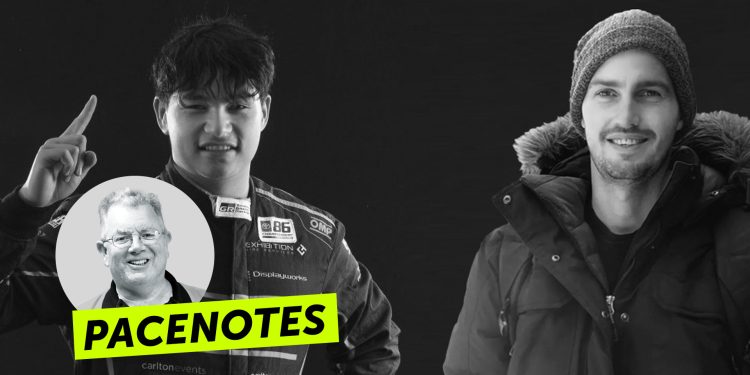Pacenotes – Gone too soon
Words: Rob Scott
It was a damp Bay of Plenty morning back in 1993, and we were all huddled against the drizzle. There was the usual banter and pre-event jitters, as we awaited the start of the day’s rallying.
But as each new crew joined the throng, word filtered through that there had been a tragedy at the World Rally Championship round in Western Australia.
Dr Rodger Freeth, one of the giants of the sport, had been badly hurt in a crash and subsequently succumbed to his injuries.
We were all stunned. The gangly Freeth was one of the most colourful characters in New Zealand motorsport, and had excelled at everything he touched.
The McIntosh Suzuki wins at Bathurst, the V8 Tranzam Starlet, the way he was revolutionising rally codriving with first Neil Allport and then Possum Bourne.
And now he was gone.
But we still competed that day, and between sombre moments, we recalled a man who had been larger than life.
A guy who added aerodynamic aids to his bikes, picked up a doctorate in astrophysics, and had an atom smasher for a coffee table in his flat. Amazing bloke.
Poignantly, it was in the same misty rain in February this year that it became apparent there’d been a serious accident at the Arcadia rallysprint.
One minute we were agonising over tyre choices for the damp surface, the next we were numbly packing up and quietly departing the Paparoa showgrounds.
Two of our best and brightest had been cruelly taken away from us in the blink of an eye.
Brooklyn Horan was only 15 years old but had spent his entire life in, on and around high-performance machinery. He was at home on both tarmac and loose surfaces, but it was clear rallying was shaping to be his forte.
Navigator Tyson Jemmett was an older wiser head, but had enjoyed the same youthful start as Brooklyn. He’d gained his first competition licence at 13 and enjoyed a varied career in Targa and 2K Cup events.
And now we’ll never know how far the two lads might’ve gone.
With Freeth there was always an acknowledgement he lived life on the edge. Bike racing can be extremely hazardous when your sole protection is a thin layer of leather but the hard-partying Doctor could just as easily have expired at the hands of a jealous husband.
With Brooklyn and Tyson the future seemed so bright. Horan’s versatility had many observers comparing his skills with the young Shane Van Gisbergen, while Tyson (a schoolmate of SvG’s) was already in awe of Brooklyn’s pace.
The rallying world reacted to Freeth’s death by improving the way safety harnesses are mounted inside the car. It was a cruel twist of fate that saw the very protective device designed to save him contribute to his demise.
It will be hard to watch the local administrators wrestle with the aftermath of the Paparoa crash, particularly when the loss of the two lads is still so raw.
The kneejerk reaction would be to ban junior drivers until they are old enough to hold a civil driving licence.
But this would go against the very ethos of recent kiwi motorsport – half our overseas racing stars started at a very young age – not to mention Kalle Rovanpera.
Our current World Rally champion was winning national titles in Latvia at the age of 14.
As competitors, we know there’s a risk every time we put on a helmet. But there’s that massive buzz you get from pitting yourself against the road and your rivals, pushing your car and skills to the absolute limits.
Yes, it is dangerous – and perhaps more so outside the sanitised environs of racetracks where armco and sandtraps protect you from the scenery.
And yes, perhaps we have become a little blasé, secure in the knowledge that modern rally cars have become so safe these days.
But sometimes – just sometimes – the risk isn’t worth it.
We’ll miss them both.
This story first appeared in the April 2024 issue of NZ Autocar magazine.





